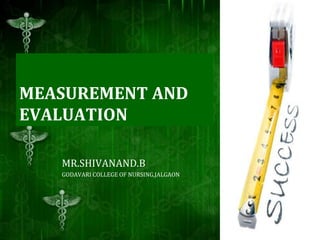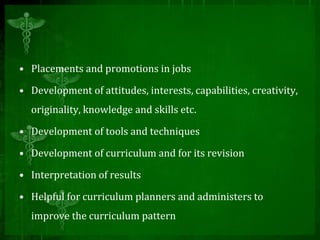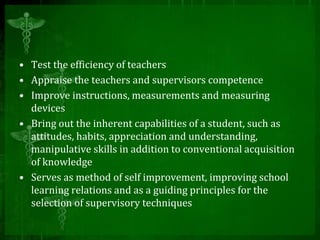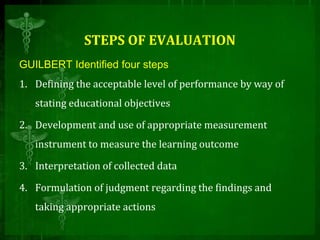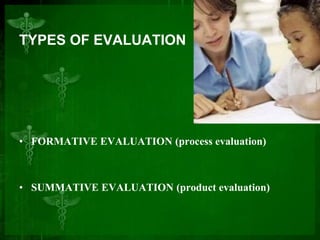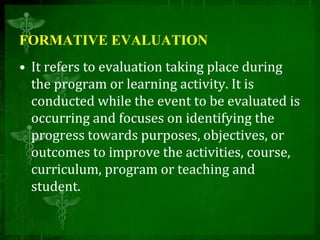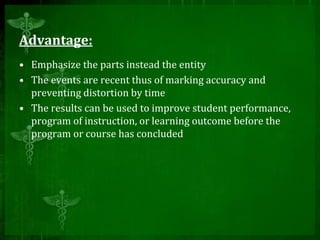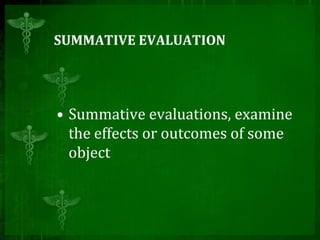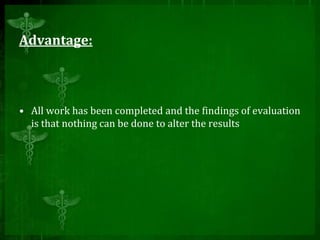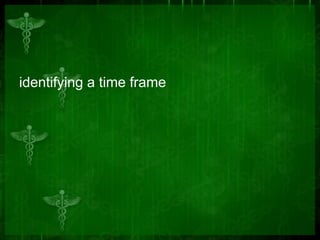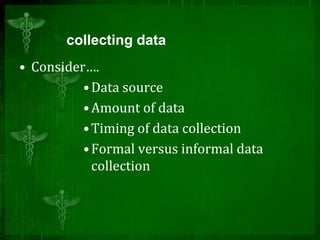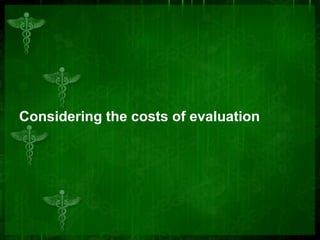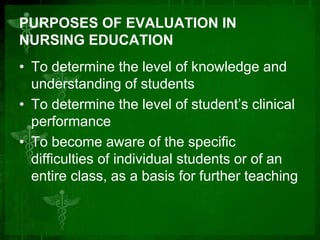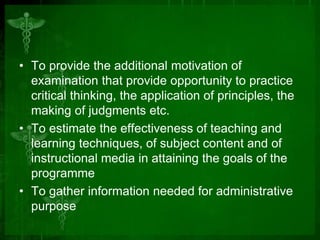1. Evaluation is the process of determining the extent to which educational objectives are being achieved and involves collecting information, analyzing and interpreting data to judge student achievement.
2. There are two main types of evaluation - formative evaluation which occurs during instruction to improve the learning process, and summative evaluation which examines outcomes after instruction is completed.
3. The evaluation process involves identifying the purpose, timeframe, data collection methods, data analysis and interpretation, and using findings to improve instruction and student learning. Validity, reliability and using multiple methods are important principles of effective evaluation.
